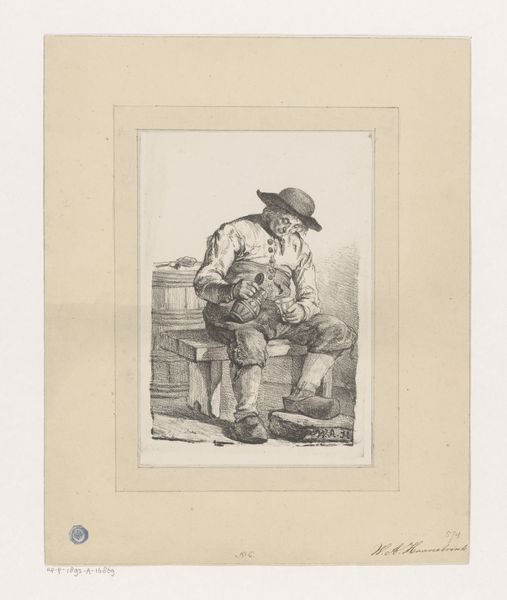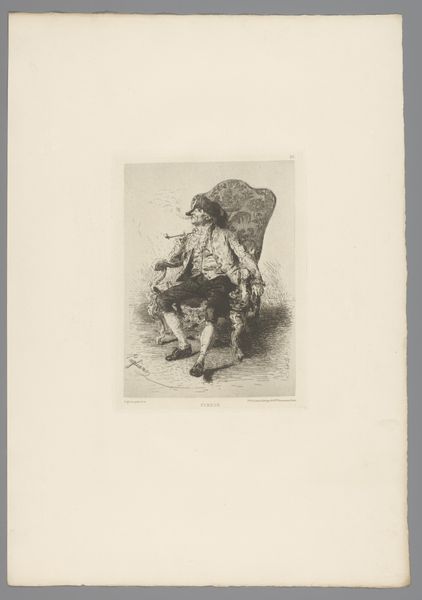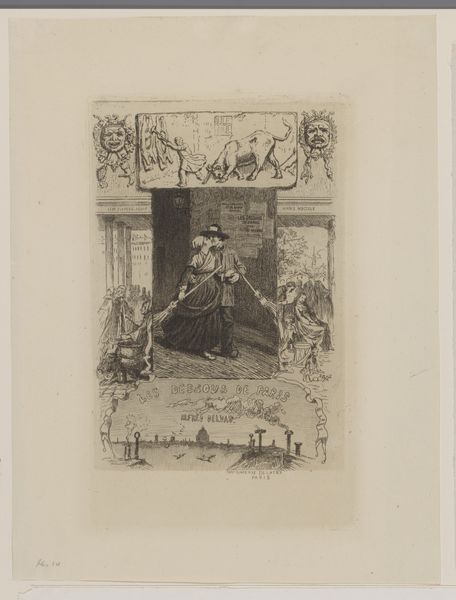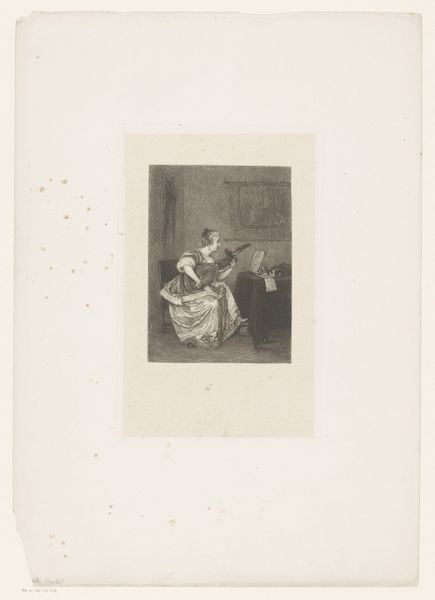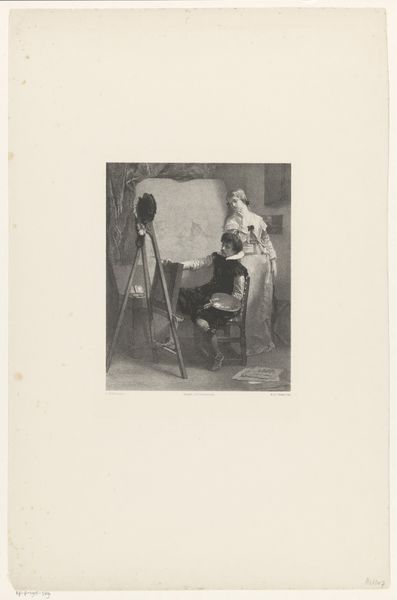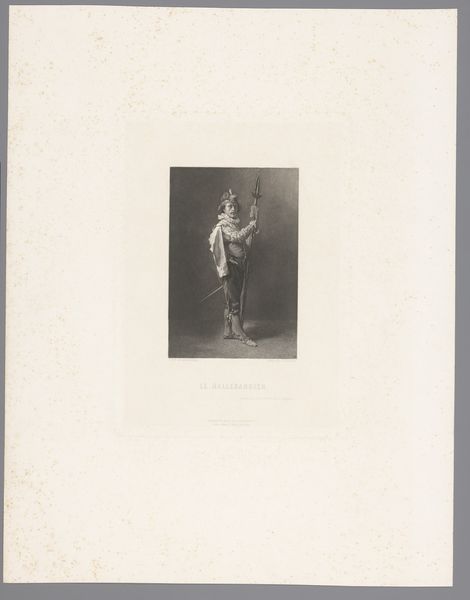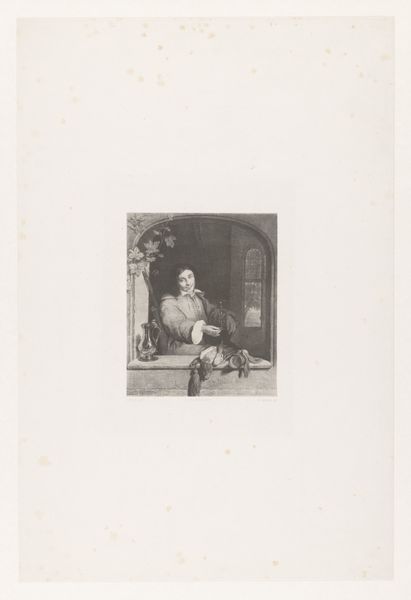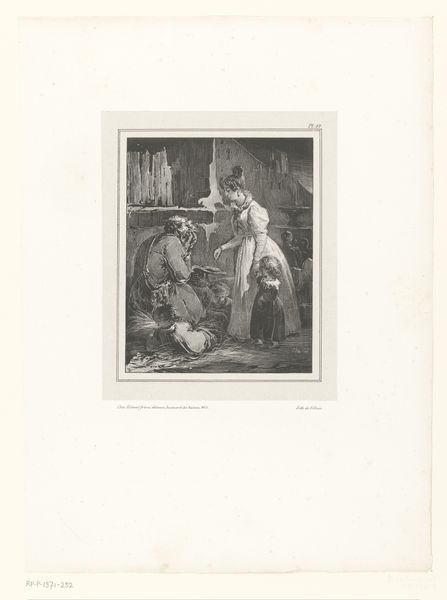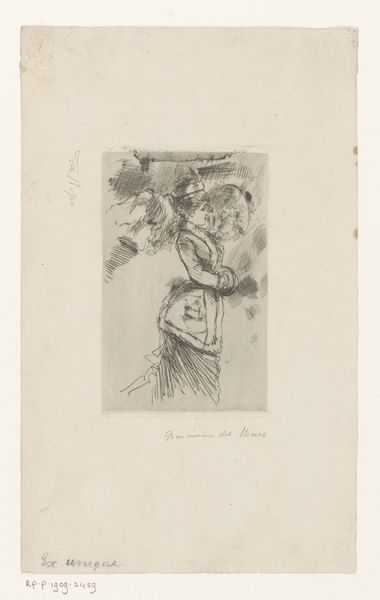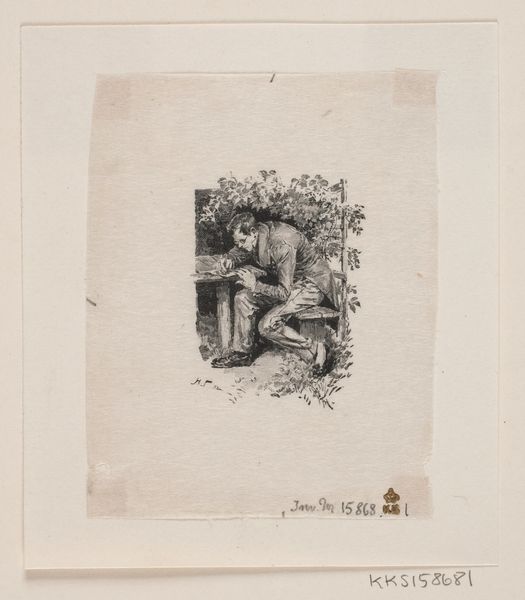
drawing, print, etching, paper, ink
#
portrait
#
drawing
# print
#
etching
#
paper
#
ink
#
genre-painting
#
realism
Dimensions: height 261 mm, width 196 mm
Copyright: Rijks Museum: Open Domain
Curator: Let's turn our attention to Ferdinand Roybet's 1875 print, an etching called "Schaakspeler." It’s rendered in ink on paper, a medium which can be deceptively simple. Editor: My initial take? Melancholy. There's a certain stillness to the figure, despite the implied action of a chess game. The shading almost feels like a veil of sadness has been cast over the entire scene. Curator: Indeed. But let’s dig into why a late 19th century artist might be drawn to such a scene. The “genre painting” aspect—depicting everyday life—speaks volumes. Notice his garb—ostensibly period costume, but Roybet was really critiquing bourgeois obsession with a romanticized past to avoid modern concerns. Editor: Ah, interesting. The costume then isn't just decorative but functions as social commentary, distancing the subject from the contemporary issues of the time. Does that contribute to the somber tone for you? Curator: Absolutely. Realism in art like this offers us a window into societal structures and values, not just aesthetics. Think of who has the time to engage in leisure pursuits like chess in that era and who benefits from these social pastimes? Who gets depicted? It’s crucial to consider such class dynamics. Editor: The political context seeps in, transforming a simple game into a statement on power and privilege. The solitary nature of the figure also amplifies feelings of alienation in a society wrestling with social disparities. Curator: Precisely. Consider also the institutions upholding these values. Did Roybet exhibit these types of works widely? What was the audience and how was it received at the time? That dialogue provides essential context. Editor: It adds a whole other layer! And you know what I’m stuck on still? The lone shoe discarded under the bench – that’s a poignant detail. Maybe it means something more to the human condition even today. Curator: These explorations are why the study of art, and its continued intersectional analysis are fundamental for meaningful progress! Editor: Well, Ferdinand Roybet's "Schaakspeler," an unassuming scene, has been unearthed as a potent visual of more than just chess!
Comments
No comments
Be the first to comment and join the conversation on the ultimate creative platform.

